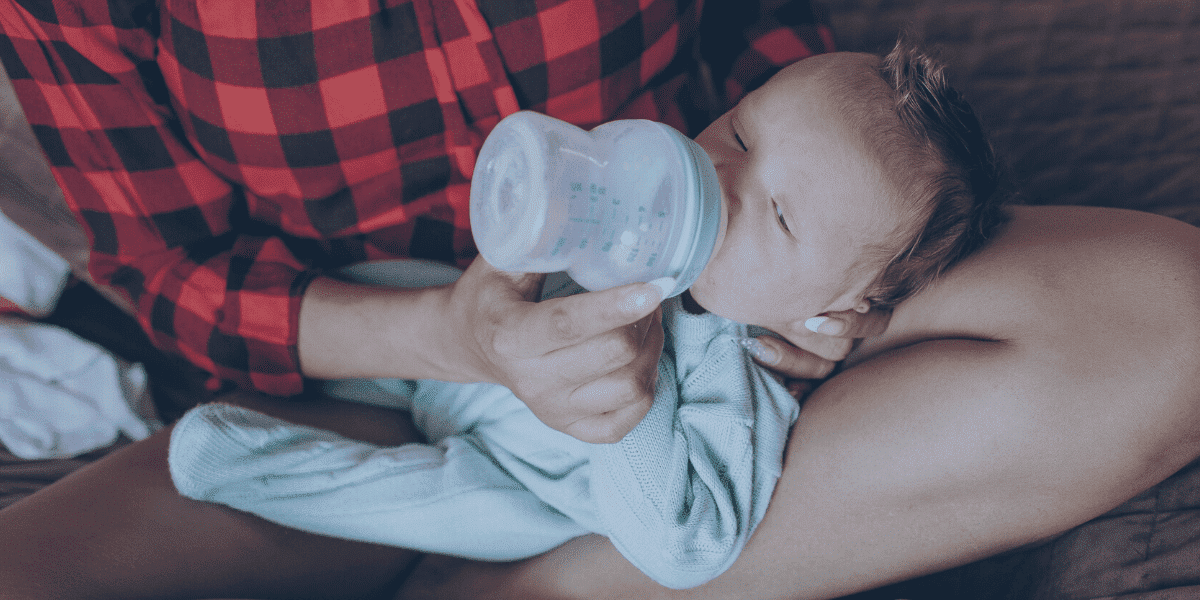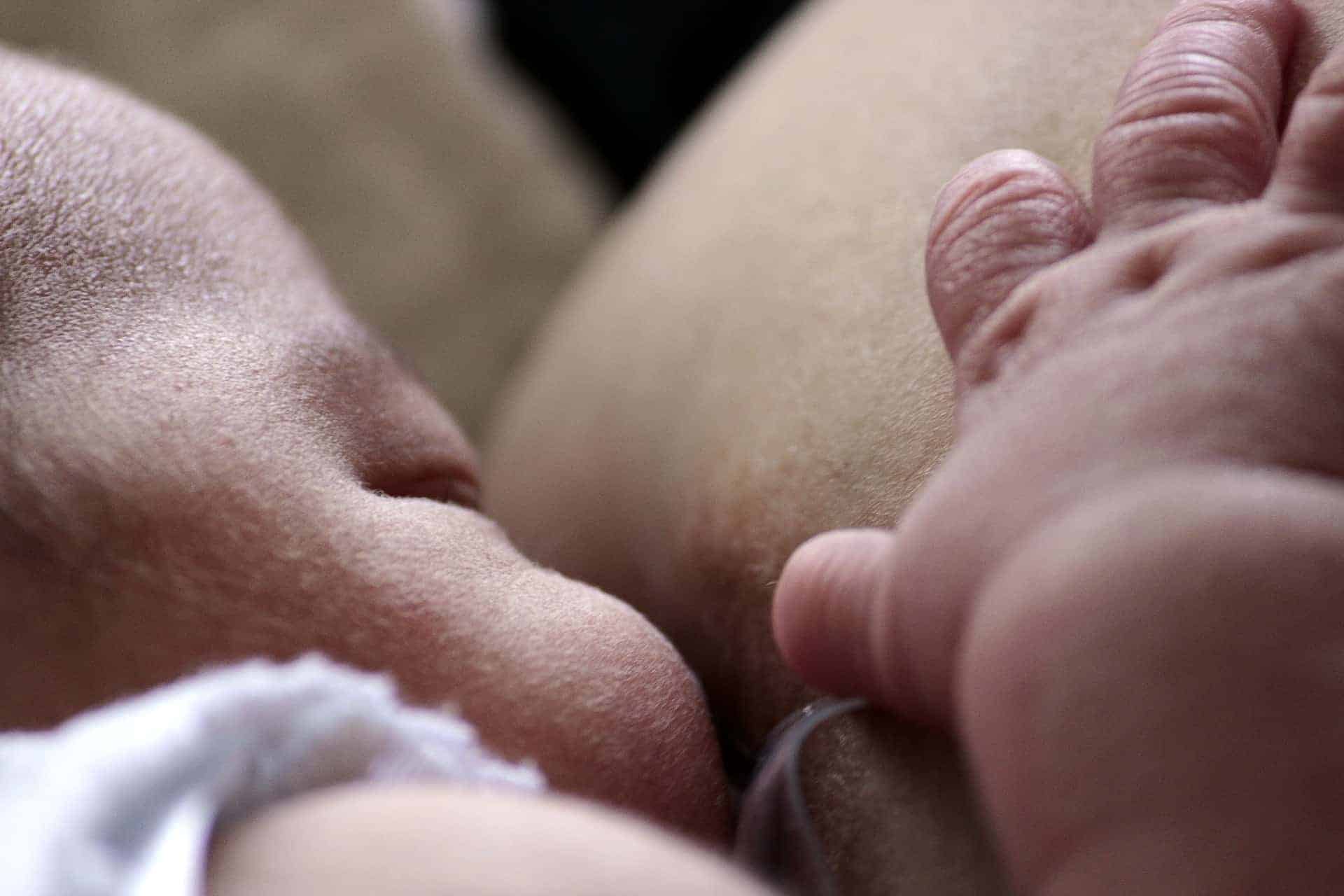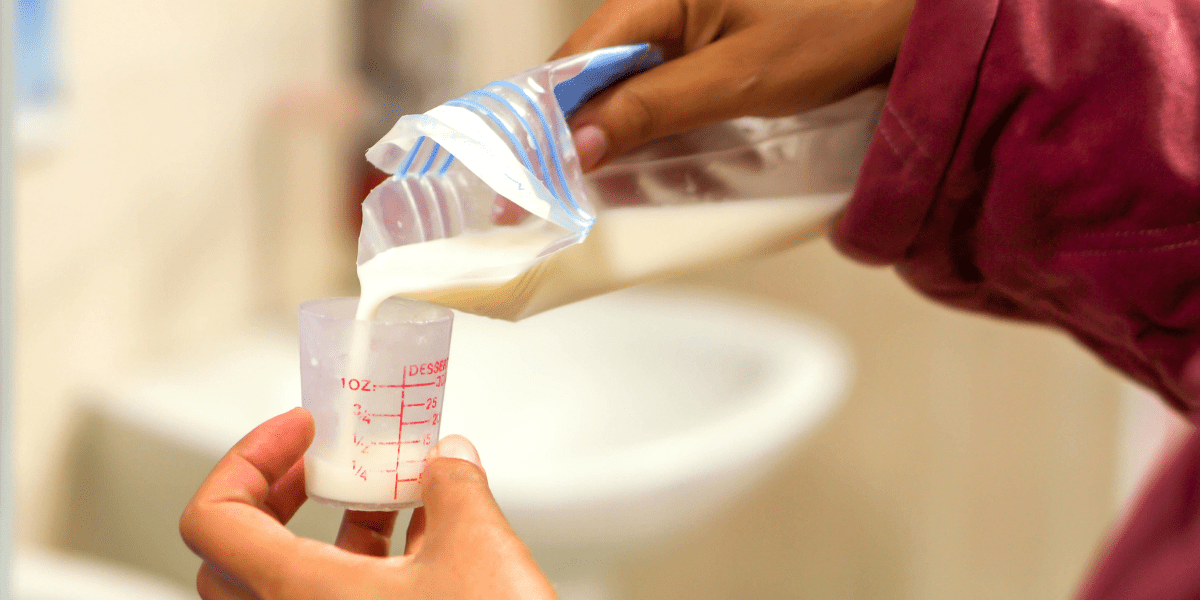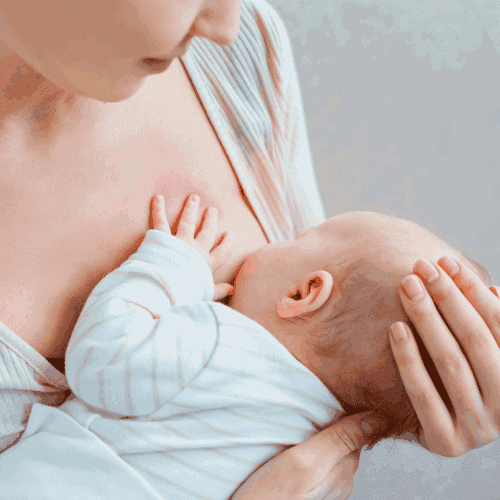The number one rule of breastfeeding and pumping breastmilk is that it should not hurt.
In the early days of feeding or pumping there will be some discomfort as you adjust to a new routine and you establish a good milk supply. You may find that you have swollen nipples shortly after pumping but the swelling should subside after a few minutes.
If you are in pain or discomfort and you have swollen nipples for more than 10-15 minutes after pumping then there are several reasons why and various ways to alleviate the swelling.
While some nipple swelling is normal when pumping but if they have still swollen 15 minutes afterward or they are very sore then you may be using the wrong size flange.
As an Amazon Associate, I earn from qualifying purchases. The links below may be affiliate links. Please read my disclosure policy for more information.
What is Normal Discomfort?
If you are just starting with pumping it is normal to experience a little discomfort as your breast adjusts to the equipment.
By normal, we mean a brief period of pain that lasts around 15 seconds when you begin to pump and your nipples stretch. Your nipple will feel tender and have a tingling sensation when your milk ‘lets down’ but this is not the case for all women.
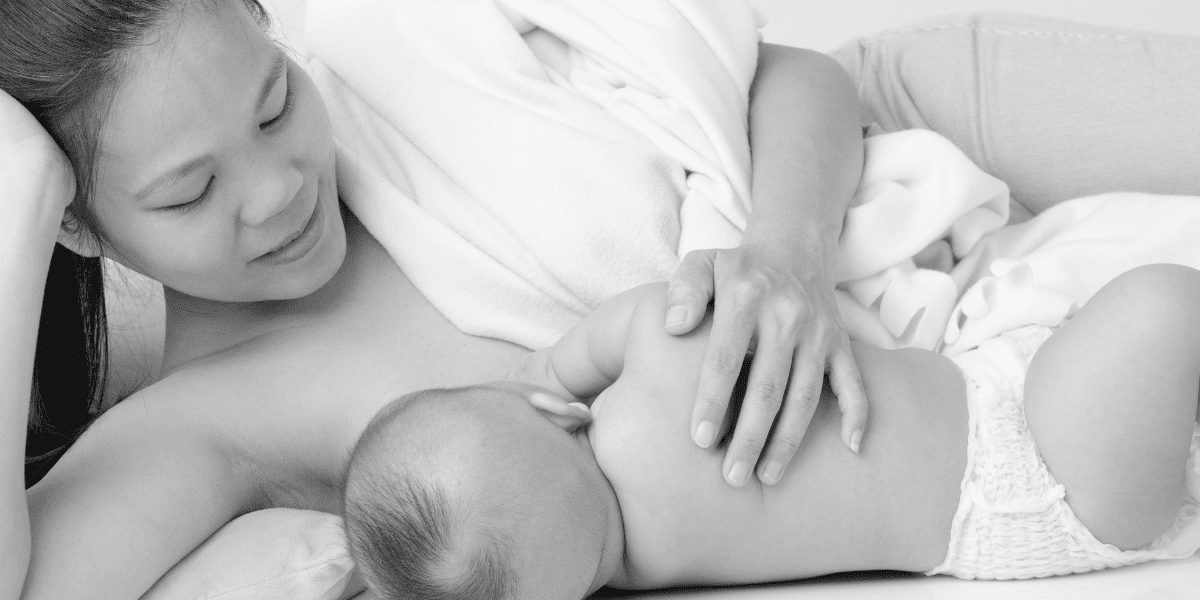
When to Address Pain
You should consult a lactation consultant or certified nurse-midwife if you are experiencing pain that lasts for minutes rather than seconds.
You should do this as soon as possible as you should not be in pain and do not want to risk breast any of the serious issues describe above, such as engorgement.
Breast Pumps
Breast pumps are very helpful when you are breastfeeding as they allow you to express milk for the times that you cannot be with your baby. It allows family members and friends to feed your baby using a bottle which can offer some respite for the mom.
There are, of course, some moms that want their baby to enjoy breastmilk but do not want to feed from the breast and some babies that prefer breasting from a bottle. It is important to research the best treat pumps as different breast pumps have unique features that may be best suited to you.
When researching breast pumps it is important that the flange, also known as the shield, is correct so that you do not injure your breast and you can express milk effectively.
If the flange is not a correct fit then the first sign that they are causing damage to the breast is nipple pain and swelling. If this discomfort is not addressed it can lead to bigger problems including blocked ducts, engorgement, and mastitis.
Incorrect Use of Breast Pumps
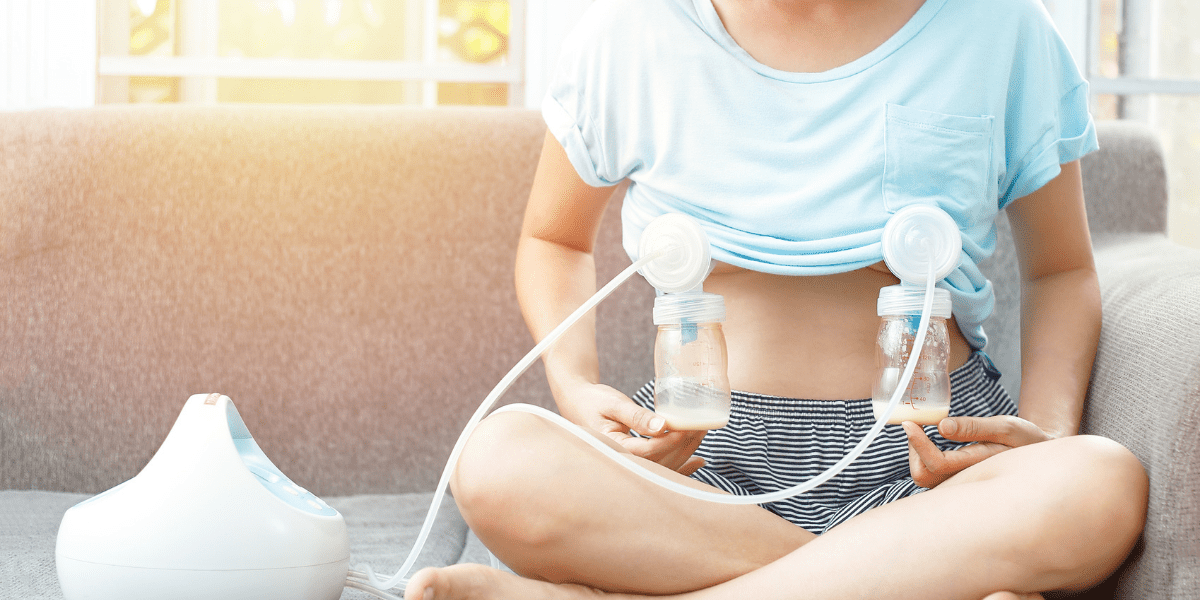
There are lots of breast pumps on the market and some are more effective than others. It is recommended that you use a hospital-grade breast pump as advised by lactation specialists.
If you cannot afford medical-grade breast pumps, as they can be expensive, you can hire them for the first few weeks of establishing milk and then switch to a standard-grade pump.
When you start using a breast pump you should increase the pump suction gradually rather than jump straight to high suction pumping. If there is pain once you increase the suction then you should slowly lower the suction again rather than carrying on through any pain.
If you use excessive suction then you risk injuring the tip of your nipple which will increase the swelling that occurs. If you are not pumping effectively and are in pain this will decrease your milk production.
Wrong-Sized Flanges
One of the biggest issues that cause pain while pumping is using an incorrect-sized flange, also known as a shield or funnel. Most breast pumps come with a standard-sized flange but over 50% of women will usually need a larger-sized flange.
The sizing of the flange is based on the width of the nipple. As a rough guide, if your nipple is larger than a 5-cent coin then you will need a larger than average flange to be fitted on your breast pump.
A larger-sized flange will allow space around the nipple so that it doe snot draw in and out of the funnel. Some women have smaller nipples and therefore will need a smaller flange.
The wrong-sized flange can also mean that you are not getting optimum milk from the breast and you will need to pump more often, therefore, leading to more tenderness and potentially pain.
You will also notice chafing, marks on the nipple, and cuts of the poor fit.
Is your Flange a Good Fit?
When you are looking at breast pumps you will see that each brand and model has a different size guide so that you can purchase the best size for your nipple. Ideally, you should buy a brand that allows you to choose from a variety of flange sizes so you can measure your nipple and buy the according to size.
If you have bought the correct sized flange you should experience the following:
- No pain in the nipple
- Your areola should not be sucked into the funnel
- You cannot feel uneven areas of the breast where milk has not been sucked into the pump properly
- Your nipple does not blanch
- Your nipple is in the middle of the flange
Breast Care
In addition to buying the correctly sized flange, you should also care for your breast so that they do not become sore when you are pumping. You should follow the below guidelines to best look after your nipples and breast when pumping.
- Wash your hands before touching your breasts and all pumping equipment
- Thoroughly wash pumping equipment as per manufacturing guidelines
- Keep your breasts hydrated and avoid using soaps and creams that will dry them out
- Ensure that you change breast pads once they get wet to prevent rashes and soreness
Common Conditions that Cause Nipple Swelling

If you have the correctly sized flange for your nipple and you are following breast care guidelines then you may be experiencing nipple swelling or breast pain due to the following reasons:
Engorgement
Engorgement happens when the great over-fills and is not emptied regularly, whether that be from not feeding your baby regularly or not pumping often enough.
Engorgement is most common around 5 days after you give birth when milk production increases significantly but it can happen at any time during your breastfeeding and/or pumping experience.
Symptoms of Engorgement
- Swollen breasts that are fine
- Pain in the breast
- Plugged ducts
- Flat nipples
- Hard areola
- High temperature
To prevent engorgement you should by pumping regularly. Most women will need to pump between 8 and 12 times every 24 hours, which is as often as you would feed your baby if you were breastfeeding them.
As well as pumping often you should pump effectively by having the correct sized flange, as discussed above.
To treat bad case engorgement you should apply cold packs to your breast to reduce swelling, If the engorgement is less severe then turn to heat instead by applying a heating pad or taking regular short warm showers.
Massaging the breasts will also help and you should continue massing until you feel the great tissue soften. You may need to manually pump your breasts until the breast softens and the milk starts to flow more easily and without causing pain.
Tylenol and Ibuprofen may help alleviate some of the pain and fever symptoms when your breasts are engorged.
Blocked Ducts
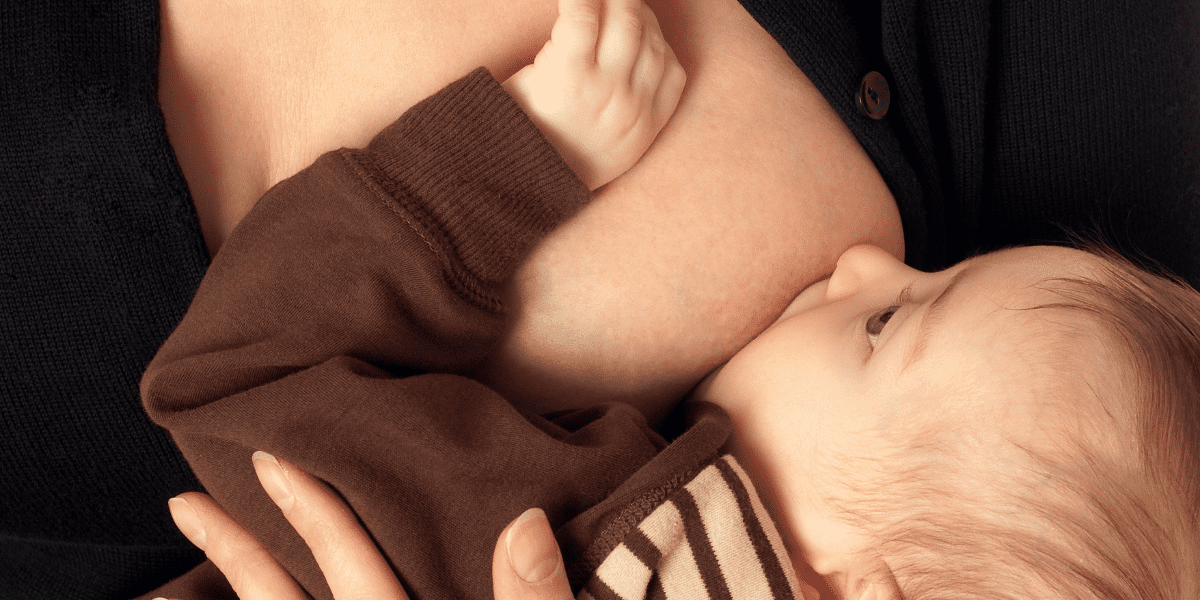
The glands in your breasts may get milk plugs which can cause the breast to become distended, swollen, and sore.
Symptoms of Blocked Ducts
- A hard lump in the breast or under the arms
- There may be one lump or several small lumps
- Pain in the breast
To prevent blocked ducts you should have a feel of your breasts after pumping to feel for any small lumps. You can then massage your breasts around the lump or roll your fingers around the nipple if that is where the suspected plug is.
Mastitis
Mastitis is an infection in the breast infection that can be the result of booked ducts or damage to the nipple.
Symptoms of Mastitis
- Red patches around the nipple and on the breast
- Flu-like symptoms include fever, chills, headaches, and an aching body
- Nausea and/or vomiting
To prevent mastitis you should thoroughly wash your bread pumping equipment as instructed by the manufacturer of the pump and wash your hands also. You should also prevent engorgement and booked ducts as explained above.
You will need to contact your doctor as you may need to be prescribed antibiotics to get rid of the infection. You should follow usual breast care advice and continue to pump and/or breastfeed as normal.
Feeding when you have a bout of mastitis may be painful so speak to your doctor about pain management.


